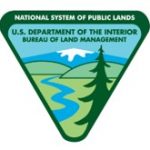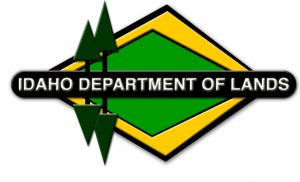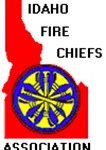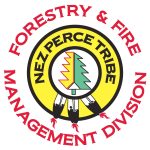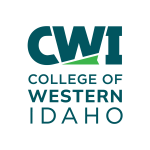
Fire Ecology & Management
Principles & Practices
WUI Culture
Though a natural part of the ecosystems of the Inland West, wildfire is one of the most feared, most fought, and most controversial components of our physical environment. Periodic wildfires are an important natural component of forest and rangeland ecosystems and help species that are best suited to a particular place, maintain a competitive advantage over less suited species.
The plant and animal community that occupies your land today is one that is in constant transition, with each species responding to changes in the local environment in their own particular time and manner. Fire is one of the few disturbances that regularly kills large numbers of mature individuals, which plays an important role in the structure of plant and animal communities.
In this section you will learn:
- that wildfires are an important, natural part of Idaho's forest and rangeland environments.
- how wildfires ignite and spread.
- what controls fire behavior.
- about the Incident Command System.
- how firefighters manage wildfires.

The plant and animal community that occupies your land today is one that is in constant transition.
More than 50 percent of Idaho is forested
Over time, forests grow thick with living and dead vegetation. Some wildfires burn all vegetation in a forest, but many leave behind a mosaic of live and dead plants.
After a wildfire, new vegetation has room to grow. New trees and tender grasses sprout in the sunlight, attracting wildlife such as elk, deer and antelope. Some trees rely on wildfire to repopulate the forest. Several species of native conifers are serotinous—the seeds remain in resin-covered cones, often for many years, until they are exposed to intense heat. The heat melts the covering, allowing the cones to open. The seeds then fall to the ground just when conditions for germination are optimal—in the ashes immediately after a fire.

Wildfire plays an important role in the health of Idaho's rangelands.
About 45 percent of Idaho is covered in rangeland
Rangeland can be a prairie, plain, savanna, steppe, or grassland. Rangeland vegetation consists of grasses, broad-leaf plants (forbs), and shrubs that can survive on little moisture, especially during the summer. Idaho rangelands produce a wide variety of goods and services, including wildlife habitat, livestock forage, water, mineral resources, wood products, recreation, open space, and natural beauty.
As in forests, wildfire plays an important role in the health of rangelands. Without regular wildfires, juniper trees begin to grow, crowding out sagebrush and grasses and reducing habitat for sagebrush-dependent wildlife such as sage grouse.

Wildfire regimes are characterized by frequency, season and intensity.
Fire regimes
Wildfires vary in terms of how often they occurs (frequency), when they occur (season), and how fiercely they burn (intensity). Combinations of these elements define an area’s fire regime. Two general fire regimes are recognized.
- A stand-maintenance fire regime consists of low to moderate intensity surface fires at short intervals (2-25 years). This type of fire regime maintains relatively uniform, possibly all-aged stands of dominant tree species, and is typical of forests dominated by ponderosa pine and western larch.
- A stand-replacing fire regime is one that has moderate to high-intensity fires that occur at long intervals (50-500 years) and is typical of forests dominated by species such as lodgepole pine.
Good Fire/Bad Fire

Hay bales being used to control erosion after a stand-replacing wildfire.
Though natural, not all wildfires are good for Idaho ecosystems. Because natural fire regimes that are unaffected by suppression are extremely rare today, today’s wildfires are very different from those in the past.
In recent years, Idaho has experienced several large, long-lasting wildfires, which burned thousands of acres at a time. Most of these stand-replacing fires occurred in areas that historically had a stand-maintenance fire regime. Unwanted results from this type of fire activity include:
- an increased magnitude of rain-on-snow events, which can result in increased erosion and catastrophic, mass movements of soil.
- the displacement of wildlife species who must find new areas to shelter and forage for food.
- opportunities for noxious weeds, especially in rangeland areas.
- increased incidences of wind throw.
- stress or death of roots, cambium, and/or crowns from excessive heat reduce a tree’s resistance to insect and disease problems, drought stress, and nutritional imbalances.

Contact Us
Mike Ward, Executive Director
director@idahofirewise.org
PO Box 220
Kooskia, ID 83539
EIN 27-2535008

